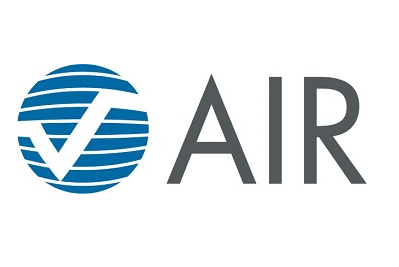AIR Worldwide’s 2020 Global Modelled Catastrophe Losses report estimates that the modelled insured average annual loss from catastrophes worldwide is nearly $100 billion.
 The 1% percent aggregate exceedance probability insured loss is nearly $301 billion.
The 1% percent aggregate exceedance probability insured loss is nearly $301 billion.
The new report acquires its loss metrics from the most current suite of global property and crop models from AIR, including new models and updates released during 2020 as well as databases of property values for more than 110 countries; the report excludes losses from AIR’s pandemic, cyber, and casualty models.
The global aggregate average annual loss and exceedance probability loss metrics for 2020 reflect changes in risk based on AIR’s annual review of industry insured values around the world and includes the impact of enhancements to the its Earthquake Model for Australia, AIR’s Earthquake and Tropical Cyclone Models for the Caribbean, and updates to the Hurricane and Inland Flood Models for the United States.
The report provides both global insured and insurable loss estimates based on AIR’s global suite of models; the difference between covered and eligible exposures suggests areas of potential profitable growth in markets already identified as vulnerable to catastrophic events.
Examination of economic and insured losses reveals how wide the protection gap is and how sizable losses can be for societies following a devastating catastrophe.
2020 opened with the most powerful earthquake Puerto Rico had experienced since 1918, the last time the island updated its earthquake preparedness plan.
Also in January, numerous bushfires continued to burn across Australia. Since the second half of 2019, the fires had scorched more than 25 million acres.
In August, a derecho caused widespread catastrophic damage in the Midwest, bringing heavy rainfall, hurricane-force winds as well as significant hail in some locations. This is as well as the Atlantic hurricane season bringing a record-breaking number of named storms impacting the entire coastline from eastern Texas near the Louisiana border to the western Florida Panhandle.
Rob Newbold, executive vice president at AIR Worldwide said: “The ability for the global re/insurance industry, financial institutions, governments, and non-governmental organisations to prepare for large losses before they occur is critical to continued solvency and resilience.
“With the insight provided by AIR’s global suite of models, companies can pursue profitable expansion in a market that is ever-more connected, and amid regulatory environments that are increasingly rigorous. These holistic analytics can give insurers and reinsurers greater confidence that the risk they’ve assumed is risk they can afford to take.”
Bill Churney, president at AIR Worldwide added: “For regions and perils covered by catastrophe models, the protection gap represents not only potential business growth opportunities for the insurance industry to offer essential protection to vulnerable home- and business-owners, but a responsibility to act.
“Understanding the protection gap can also help governments assess the risks to their citizens and critical infrastructure, and develop risk-informed emergency management, hazard mitigation, and public risk financing strategies to enhance global resilience and reduce the ultimate costs from catastrophic events.”


